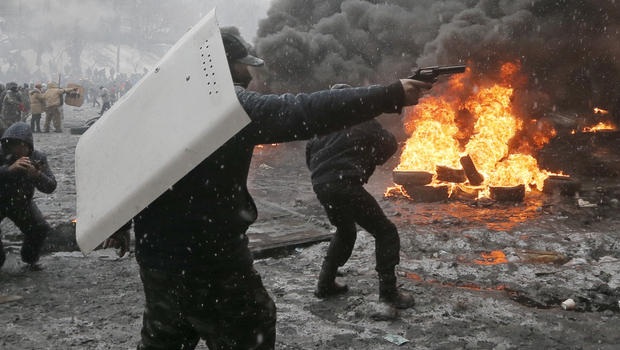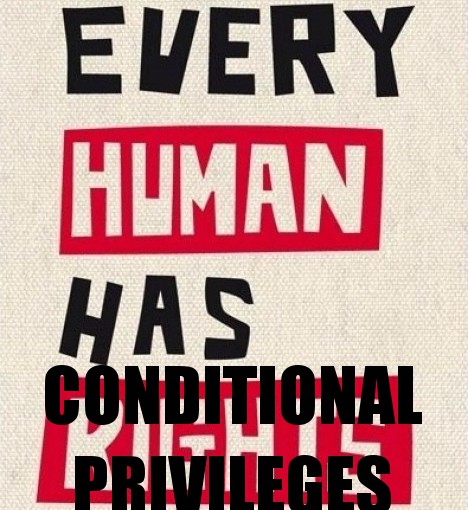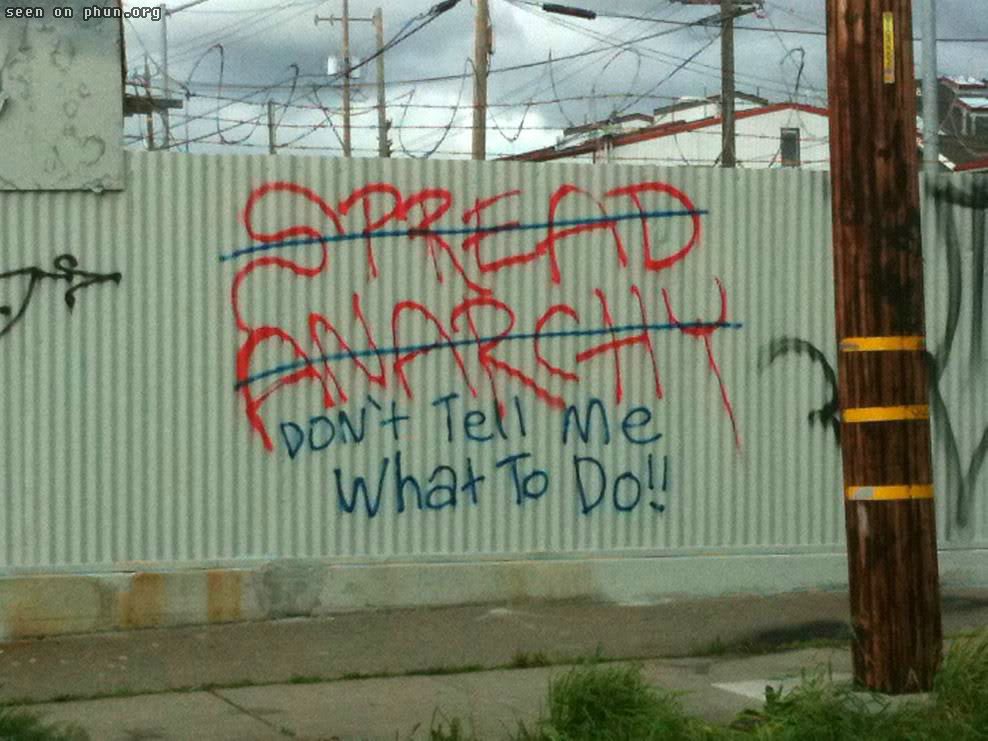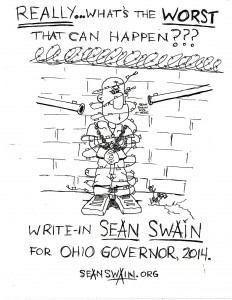In a recent podcast, CrimethInc presented a feature on fascism and anti-fascism. In this feature, Clara presented that fascism “attempts to be a popular movement: which “advocates for strong centralized power in the state.” In this way, fascism “offers an authoritarian vision of society as a solution.” Clara also presented that another “core principle is nationalism,” and that this translates, often, into “hatred of the outsider.” Fascism is also “virulent” in its “opposition to communists, anarchist, and most other radicals.”
For the purposes of the podcast, this served as a good working definition, though a somewhat superficial one. What follows is my response, an effort to provide a fuller context and, hopefully, a much greater appreciation for the reasons that anarchists more than anyone recognize the danger that fascism truly represents.
Freedom
Let’s start this off by talking about freedom. To approach this from a purely Anarchist perspective, I think that’s where we have to start, because ultimately freedom is the true point of conflict. As I think this will demonstrate, Anarchists more than anyone else are for freedom, and fascists more than anyone else are against freedom. And this, then, would explain why the struggle between Anarchists and fascists is such a bitter and important one. In fact, if freedom matters to you, then this ongoing battle is more important than anything else.
But before we get rolling too fast, before we get ahead of ourselves, I think we need to define “freedom.” If we don’t, we’re left with everyone thinking of freedom in a million different ways – in a world where we have something called “freedom fries,” no less – and that can only lead to confusion. So, for clarity, let’s define freedom. For that purpose, I would like to defer to Ward Churchill who has defined freedom as “the absence of external regulation.”
I think that’s a good definition. The more external regulation you have – the more someone or something else is telling you what to do – the less free you are; the less you have someone else telling you what to do, the more free you are. So, without getting into the questions of all the potential activities we either have or lack the freedom to engage in, we have a decent, working definition of what freedom is.
This is important, because everything else rests on this.
So now, imagine a continuum, a line. Often we see this in order to compare and contrast liberals, who occupy the left end of the line, with the conservative, who occupy the right end. But for our purposes, these “liberal-conservative” concepts are really irrelevant. We just want to borrow the line, the continuum.
At one end, let’s imagine freedom – absolute freedom. This is the total absence of external regulation – as free as it gets. Way down at the other end of the continuum, we have absolute non-freedom, which is the total and complete domination of external regulation. This would be the extreme of being controlled by someone or something else, 24 hours a day.
So we have our opposites, our points of reference, absolute freedom and the total absence of freedom, and all the points on the line between them would represent some interplay, some compromise, of varying degrees of freedom and regulation.
Now, having established that, what is another term for “external regulation”? When we speak of someone or something that exercises authority to regulate us, the word we usually use is “government.” To regulate is to govern, and governing is conducted by a government.
This is important, because we turn back to our continuum and at one extreme end; we find absolute freedom, the complete absence of “external regulation.” This extreme end, freedom, has no external regulation, no regulating, no governing – no government.
Absolute freedom, then, the absolute absence of external regulation, is absent the “external regulator” of government. This point on the extreme end of the continuum is the absence of government.
People who advocate such absolute freedom are labeled “Anarchists.” Everyone else in the entire spectrum of politics and social order advocates at least a minor amount of external regulation, a minor amount of imposition or individual freedom, a minor amount of “government.”
(A small side note here, but likely, most people if presented with the freedom to non-freedom continuum and asked what they believe to be ideal, would likely point to the Anarchist extreme of absolute freedom – particularly people in the U.S. They would unhesitatingly point at absolute freedom even though most people, in reality, are somewhere in the middle of the spectrum ideologically. This is because we live in a culture that gives a lot of lip service to freedom while sliding ever further away from it. Keep in mind, the majority of the U.S. population also self-reported to believe in all ten of the Ten Commandments, but the average person could only name three of them…which would indicate that we’re working with a deeply irrational group of people who deeply believe in things they don’t know.)
Given this analytical framework, before we move on, it might be important to point out that everyone on the continuum, besides Anarchists, are Statists – that is, they believe in government. Also, everyone but Anarchists are defined by the degree to which they oppose absolute freedom.
Fascism
In The Doctrine of Fascism by Benito Mussolini,1 the Italian dictator wrote, “Anti-individualistic, the Fascist conception is for the State…” For the fascist, “…all is comprised in the State and nothing spiritual or human exists – much less has any value – outside the State.”
Elsewhere he wrote, “The capital point of the Fascist doctrine is the conception of the State, its essence, the work to be accomplished, its
final aims. In the conception of Fascism, the State is absolute before which individuals and groups are relative.”2
And Giovanni Gentile, in the Philosophic Basis of Fascism, wrote, “The politic of Fascism revolves wholly about the concept of the national State…”3
Given these quotes, we can see that what distinguishes fascism as a political philosophy is its belief in the absolute transcendence of the State, of government, and simultaneously, the “anti-individualistic” position that nothing human, i.e., individual freedom, exists. Thus, fascism occupies the opposite end of the freedom spectrum from Anarchism. It seeks to eliminate all human freedom and to subject all to the dictates of an all-powerful State – the perfect and absolute negation of all liberty, all individuality. Nothing matters but the State.
It follows then, as a natural corollary, given that individual freedom is inimical to the State, that the State would seek, under fascism, to wipe out all individuality, all human distinction, all diversity. For the transcendent, fascist State, there can be only one perfect subject, the perfect “National Socialist Man,” as Hitler advertised and promoted him.4 With imposed homogenization, conformity, uniformity, anything “other” must be eliminated.
So, anyone religiously, politically, racially, artistically or sexually “other” than what the State has decreed to be optimum for the State’s interest, must be eliminated. Fascism, then, is a dream of a freedom less world of automatons marching in lockstep, surrendering all individuality in deference to the State.
Only Anarchists Can Oppose Fascism
If we return to the freedom-versus-non-freedom continuum, there are some rational conclusions we have to draw. First, we recognize that only the extreme position on the far end of the continuum advocates for absolute freedom, which is the absolute absence of external regulation, which is the complete absence of the State.
Every other position accepts some degree of regulation, of external control, of State intrusion. This means that every single political philosophy, with the exception of Anarchism,5 accepts the existence of the State and, on this point, every political position except for Anarchism is in agreement with fascism.
Viewed this way, the entirety of the political spectrum – from communists to social democrats to republicans – is really nothing more than a sliding scale of how many degrees removed from fascism each position is. One step removed from absolute fascism may represent the hard-liners of the Republican Party – a kind of “fascism light,” – with liberal democrats several steps removed, but still firmly in the throes of state-worship.
Thus, even communists and socialists share the same belief in the necessity of the State, but differ with the fascists only in the amount of power that should be invested in it. In the analogy of state worship, fascists sit in the first pew while the communists and socialists sit in the very back – but they all attend the same service. The only socio-political formations that do not bow to the fascists’ god are Anarchists.
As a consequence, only Anarchists can present a full and complete critique of fascism. This makes Anarchism particularly deadly to fascism and explains why, historically, fascists seek to eliminate Anarchists first and foremost.
The Fascist Threat
We can now turn to the reality that confronts us, which includes Nazi Skinheads wearing Swastikas and waving flags while marching through minority neighborhood. And, certainly, as Andrew from the New York City Anarchist Black Cross pointed out in the Crimethinc podcast, these elements cannot be ignored. But realistically, these misguided flag-wavers do not hold State power and given their outspoken advocacy for an ideology most would find at least troubling, this fringe will likely never attain State power.
The true fascist threat comes from those who do wield State power and implement policies and programs that are distinctively fascist in that they serve a transcendent State. While Barack Obama does not wear a Nazi uniform or march with the Hitler Youth, he does approve the vast invasion of the world’s telecommunications; he send drones to kill U.S. citizens abroad; he authorizes the detention of ideological enemies. In short, he serves a de facto fascist agenda, an agenda of extreme and absolute non-freedom thinly-disguised as a representative republic.
The State is central to fascism. If you want to defeat fascism, defeat the State. Only Anarchists can do that.6
End Notes
1 Readings on Fascism and National Socialism, by selected members of the Department of Philosophy, University of Colorado, 1952.
2 “The Value and Mission of the State,” Ibid.
3 Ibid.
4 We have to imagine that the “National Socialist Woman” would also exist, though she isn’t mentioned.
5 By “Anarchist,” I mean anything that fits our definition of advocating absolute freedom and the complete absence of external regulation, whatever advocates of such a position may call themselves.
6 To clarify, anyone who designs to destroy the State and abolish it, whatever his or her politics would be, de facto, an Anarchist. Thus, only Anarchists can abolish the State, as only Anarchists would undertake to do so.
 [UPDATE: These support actions have proven fruitless. Thomas Miller is slow walking us, dragging his feet and waiting for Sean to die. JPay has blocked anyone from scheduling video visits with Sean. Here are some better options. You can still call Miller, cuz he loves talking without saying anything. He talked to my retired elementary school, dyed in the whool bleeding heart liberal mom for twenty minutes the other day, and pissed her off. Ohio tax payers must be paying him to sit around throwing pencils at the ceiling most days. Also, you can still apply to visit Sean, and write him letters, cuz that shows support, but don’t bother with JPay.]
[UPDATE: These support actions have proven fruitless. Thomas Miller is slow walking us, dragging his feet and waiting for Sean to die. JPay has blocked anyone from scheduling video visits with Sean. Here are some better options. You can still call Miller, cuz he loves talking without saying anything. He talked to my retired elementary school, dyed in the whool bleeding heart liberal mom for twenty minutes the other day, and pissed her off. Ohio tax payers must be paying him to sit around throwing pencils at the ceiling most days. Also, you can still apply to visit Sean, and write him letters, cuz that shows support, but don’t bother with JPay.]


 Dear Ukrainian People,
Dear Ukrainian People,
 Sean Swain
Sean Swain What is an anarchist engagement? I ask because I’m running for Ohio Governor in 2014 as a write in candidate from Ohio’s super-duper-uber-mega ultramax facility.
What is an anarchist engagement? I ask because I’m running for Ohio Governor in 2014 as a write in candidate from Ohio’s super-duper-uber-mega ultramax facility. Media Release
Media Release Pacifists Suck: How Arresting Revolution Maintains a Violent World
Pacifists Suck: How Arresting Revolution Maintains a Violent World